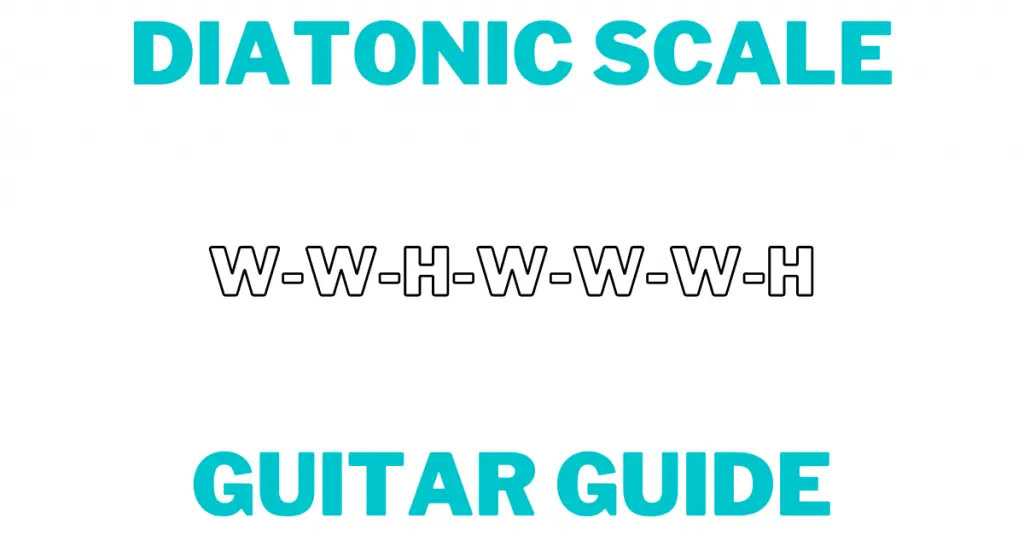In this guitar lesson you’ll learn what diatonic means, what diatonic scales are, and how they apply to guitar theory.
What is a diatonic scale?
A diatonic scale is a 7 note scale (heptatonic) containing 5 whole steps and 2 half steps in each octave.
Understanding Diatonic Scales
What does diatonic mean in music?
Diatonic means “from a scale”, in particular a mode of the diatonic scale.
For example, the diatonic notes in the C major scale (C Ionian) are C-D-E-F-G-A-B.
If you introduce new notes or chords into a C Ionian melody or chord progression, it is no longer diatonic.
Diatonic chords explained
Diatonic chords are the chords built from diatonic scales.
For example, the 7 diatonic triads in the key of C major are:
C Major – D Minor – E Minor – F Major – G Major – A Minor – B Diminished
These chords are built by stacking notes from the diatonic scale in thirds. This ends up being every other note in the diatonic scale.
Continuing to use the C major scale, stacking notes from the notes C gives us C-E-G, which gives you a C major triad.
Stacking notes from the second pitch in the C major scale, D, gives us D-F-A, which gives you a D minor triad.
You can continue to do this with every pitch of a major scale, and you’ll build all of the triads from that scale.
As you stack more pitches, the chords remain diatonic, but become larger chords.
Learn more about these chords here.
7 modes of the diatonic scale
There are 7 modes of the diatonic scale. These modes are:
- Ionian
- Dorian
- Phrygian
- Lydian
- Mixolydian
- Aeolian
- Locrian
Diatonic simple definition
Diatonic defined simply means stemming from or relating to a musical scale/mode containing 5 whole tones and 2 semitones.
The most common example of this definition is the major scale. Learn about it and it’s formula here.
How to tell if a song is diatonic
You can tell if a song is diatonic by looking at the notes in the melody and accompanying chord progression.
As long as the notes don’t break away from a parent diatonic scale, the song is considered diatonic.
Why is it called the diatonic scale?
It’s called the diatonic scale due to its ancient Greek definition meaning “through tones”.
Difference between chromatic and diatonic
A chromatic scale contains all 12 notes/pitches, played a half step/semitone apart.
A diatonic scale, on the other hand, uses a seven note scale sequence containing 5 whole steps and 2 half steps.



